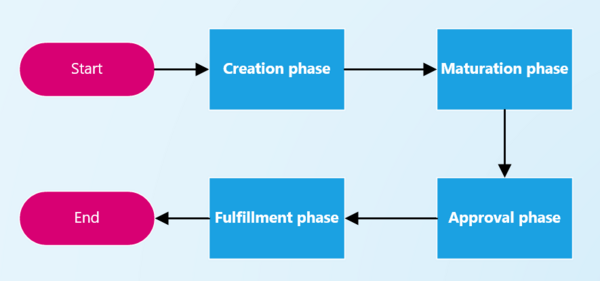Difference between revisions of "Internal order"
Stefanseiler (talk | contribs) |
Stefanseiler (talk | contribs) |
||
| Line 8: | Line 8: | ||
* the user knows <u>the exact items</u> which are required, picks a product listed in the shop. We call this a '''fully qualified product position''' Example: I want product "HP 17-Cp0212ng". | * the user knows <u>the exact items</u> which are required, picks a product listed in the shop. We call this a '''fully qualified product position''' Example: I want product "HP 17-Cp0212ng". | ||
* the user knows only his <u>general demand</u>, but does not know which products are the right ones. We call this a '''[[Purchase | * the user knows only his <u>general demand</u>, but does not know which products are the right ones. We call this a '''[[Purchase Requisition|purchase requisition position]]''' Example: I want a "bike with 20 inch wheels" | ||
After creation has completed the internal order reaches the state "'''created'''" | After creation has completed the internal order reaches the state "'''created'''" | ||
Revision as of 17:55, 17 June 2023
For staff members requiring items to work, the internal order is the document of choice to communicate their demand.
Phases of an internal order
Creation phase
For the creation phase, we have designed our shop solution to file the internal order. Typically two use cases can be differentiated:
- the user knows the exact items which are required, picks a product listed in the shop. We call this a fully qualified product position Example: I want product "HP 17-Cp0212ng".
- the user knows only his general demand, but does not know which products are the right ones. We call this a purchase requisition position Example: I want a "bike with 20 inch wheels"
After creation has completed the internal order reaches the state "created"
Maturation phase
If an inernal order holds purchase requisition positions, it can not become approved as not full qualitifed product is leaving uncertaintainy. This makes material, price and team approals impossible and the approval phase may not be entered.
In this phase a operative procurement officer is researching about the purchase requisition positions trying to convert them into a fully qualified product positions. Once all positions are converted, the internal order reaches the state "ready for processing"
Approval phase
Examples for internal orders This offers a rapid process for employees to fill their demand on items required for their work (e.g. for c-parts). Typical products for this process are c-parts like tools, personal protective equipment (ppe) or corporate wear. The processual outcome of the shopping process is either an internal order, a purchase order or a customer order.
Internal order flow
Purchase requistion (freetext) --> internal order --> fulfillment
Fulfillment of internal orders
Once the demand is filed, companies have two decide between two core fulfillment strategies:
- stock fulfillment - means the fastest availability of goods. Downsides are capital binding, warehousing and disposition planning costs.
- On demand purchasing - means slower availability and direct dependency on supplliers. Benefit is the reducion of warehousing cost. Capital binding and disposition planning can be negotiated with the suppliers.
General Process Flow
- Ordering
- "AdHoc purchasing" vs "Local Fulfillment"
Process "Just in time ordering"
Gathering and grouping of demand
Clearance process
Purchaing with supplier
Fulfillment
Billling
Process "Local Warehousing"
Problems
Maverick buying
distributed clearance process require process guidance - especially material clearance
Combination of "Just in time process vs. bulk ordering
warehousing in bulk ordering
